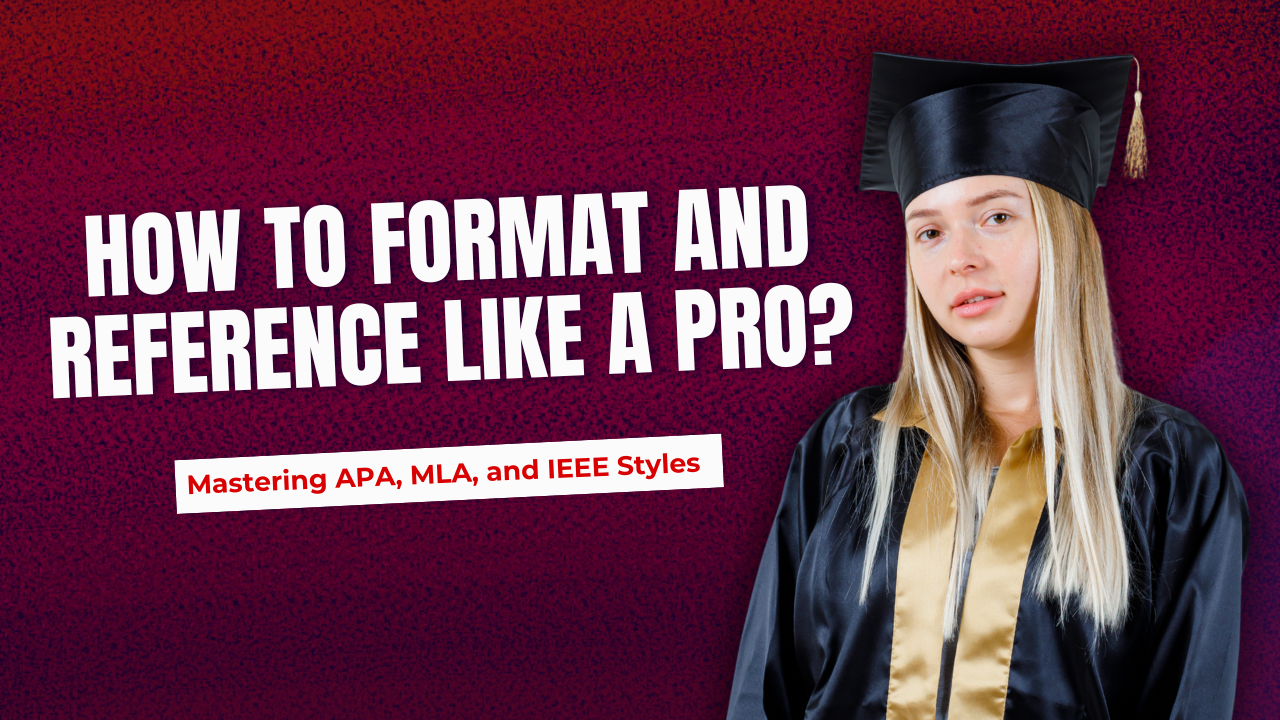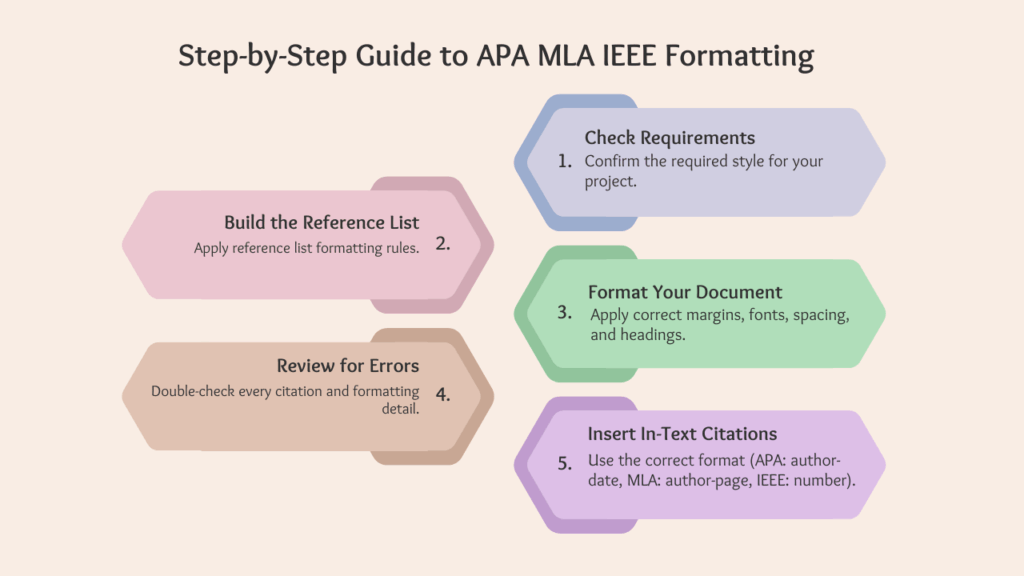18Aug

In academic writing, knowing how to format and reference correctly is just as important as conducting the research itself. Whether you’re preparing a research paper, thesis, dissertation, or scholarly article, proper formatting and referencing demonstrate credibility, professionalism, and academic integrity.
In this comprehensive guide, you will learn how to format and reference like a pro using three of the most widely used academic referencing styles — APA, MLA, and IEEE. We will explore formatting guidelines, in-text citations, reference list formatting, and style differences so you can confidently create high-quality academic work.

Citations and references are ways of giving credit to the sources of information you use in your writing.
Referencing styles are standard rules that decide how citations and references should be written. Some common styles are APA, MLA, Chicago, and Harvard.
The three main referencing styles covered in this guide are:
The APA format places a strong emphasis on author-date citation, consistency, and clarity.
The MLA format is widely used in humanities because of its simplicity.
The IEEE format is number-based and ideal for technical fields.
Knowing these differences between APA MLA IEEE ensures you follow the correct style for your discipline.
Here are best citation practices to maintain accuracy:

Large projects like dissertations require strict formatting:
To succeed in research and academic writing, one must learn how to format and reference in APA, MLA, and IEEE styles. By understanding referencing styles, applying accurate citation rules, and avoiding common mistakes, you can present work that is professional, credible, and ready for scholarly publishing.
Whether you’re a beginner or an experienced researcher, consistent formatting and correct citations will set your work apart.

Writing a structured literature review is one of the most important milestones in academic research, especially for graduate students and... read more

Tamil Nadu’s Best PhD Assistance Company - Kenfra Research: Helping PhD Scholars Across India Achieve Their Academic Dreams read more
Test to select 300 scholars for fellowship in Nov Selecting 300 scholars for a fellowship program in November requires a well-structured... read more
The University Grants Commission (UGC) in India recently took an unprecedented step to alleviate the academic pressure on students in... read more
It's wonderful to hear that there has been a significant increase in the enrollment of girls in engineering courses in... read more
The concern you've raised about the lack of content revision in core engineering education is not uncommon and has been... read more

Writing a research paper or thesis can be challenging, especially when it comes to the Results and Discussion chapters. These... read more

Best Tools for Academic Proofreading and Editing read more
Korean universities aim to attract more Indian students Korean university: Korean universities are institutions of higher education located in South Korea. South... read more
WhatsApp us
Leave a Reply